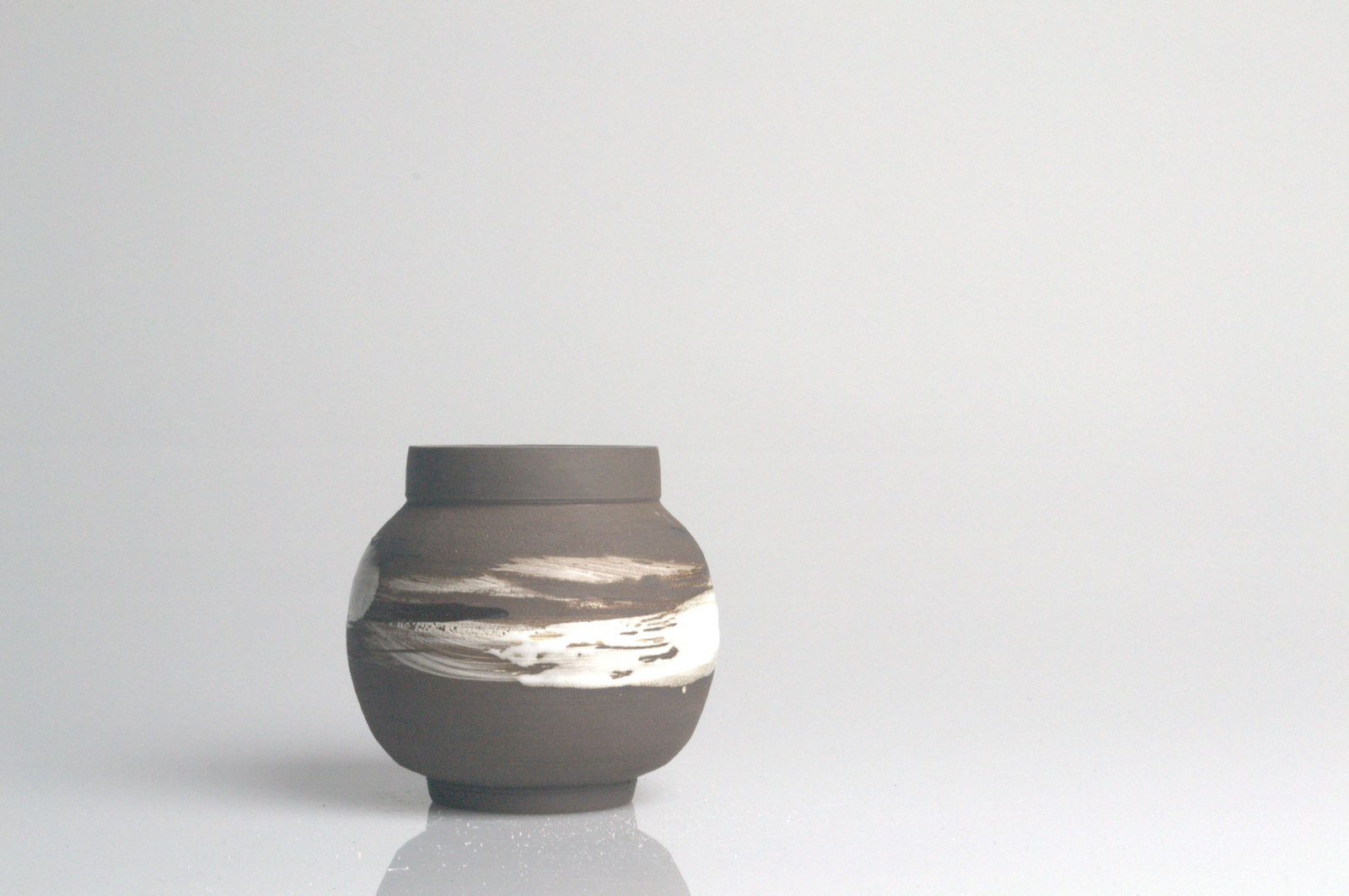Control vs Chance
The Vessel
It’s interesting to note the the inspiration for my practice stems from my experience as a child of sailing with my dad on his old wooden boat in the swale. Some may refer to this as a vessel which is intriguing as this is also a commonly used expression for ceramic vases or pots. A vessel by definition can be referred to as a boat or ship or it can be referred to as a container used to hold liquids. Similarly with the thrown vessel as with the vessel on the water part of the aim is to keep as much water out of the hollow interior as possible.
The boat, similar to the wheel is the human way of manipulating elements for pleasure and reward. The boat harnesses the wind to gain speed and the risk lies in the skippers ability to successfully keep the boat afloat on the unpredictable waves created by nature. Similarly the vessel thrown on the wheel is only seemly successfully if the potter is able to harness the momentum of the wheel to manipulate a lump of clay. With both activities, the success comes when the skipper or the potter is able to successfully balance and control these seemingly uncontrollable elements.
Following on from advice offered from Nick and Ashley, I have been encouraged to embrace the freedom of pushing the boundaries of control. Potters spend years mastering the skill of centring, lifting and shaping pots. So with this is mind I explored the possibilities once some of these boundaries have been dismantled.
Throwing off centre
Throwing with too much water/ too little water
Throwing with the wheel rotating in the opposite direction
Throwing with one hand
Placing pressure / not enough pressure on certain elements of the pot for e.g squeezing the foot of the pot or poking the neck
Using fingers/ not using fingers
Artists to Look at:
Shozo Michikawa
I was recommended to look at the work of Shozo Michikawa- I found this article and have highlighted some really interesting points that he’s made in regards to experimentation and bushing boundaries. It’s also really interesting to hear about the influence of the geography of where he grew up as inspiration for his pieces and the importance of volcanoes. His use of incorporating the natural elements local to his area into his pieces such as ash from burnt cedar wood used during the firing process
Ceramic Review, July 2020. In Conversation with Shozo Michikawa (304), p.34-35)
My attempt at Shozo Michikawa pot
George Ore 1900 Glazed Earthenware
Ohr’s personal mantra was “no two alike,” and he was as eccentric as his work was individualistic, with its manipulated forms on thrown vessels, crimping, ruffling, off-centering, and twisting, to create unprecedented forms. To these forms, he applied his own completely new and unusual glazes, applied by sponging, splashing, and spattering, resulting in works that in many ways anticipated the abstract art movements that would find form decades later.
https://en.wikipedia.org/wiki/George_E._Ohr
It is this child like state of exploration of the material that fascinates me most about Ore’s work. He’s ability to reject the manufactured perfection seen in this era of pottery was and still is liberating. Combined with his eccentric personality and way of working, he would draw curiosity and intrigue. It’s perhaps this ability to challenge uniformity and social construct that made his pieces so unique and intriguing.
Taking this onboard, I decided to experiment further with he material and embrace this idea of involving chance in my pots. I decided to therefore begin with this exploration by breaking with my initial intention to simply turn off the pots made from my previous session. Instead I decided to play with this idea of chance. How could I break down my desire for control ?
Placing the leather hard pot upside down in a bucket of clay slop for 30minutes
Throwing the clay slop onto a rotating pot
Throwing off centred pots and trying to turn the base into a footstool
Dropping the pot whilst still a soft leather texture
I also wished to see what might happen during firing if the broken glass/ ceramics found in the mud on my walk along the swale could be incorporated and what the effect might be. Also a way of playing with this idea of past objects/ craft wares emerging from the mud. Natures materials manipulated by man, emerging once again from where they first began.
Below are example of pot throwing, focussing on texture and application. The last 2 images are my first attempts at throwing with no water which I actually really enjoyed and found liberating. It gave me a feeling of freedom to play with the material and to not be too precious about adhering to all the rules put in place when throwing. I’m going to work on throwing without water. The texture once firedI think will resemble some of the burnt wood seen along the Swale from the carcasses of old ship wrecks. See image above
I also had a play on wheel with using too much water and placing too much pressure on certain places on the thrown pot. What would happen if I squeeze the foot or leave my finger for too long at a certain angle? I also added too much water and variation of clays to see what might happen. Aesthetically, I am not happy with the final product but I’m very keen on looking at how to create the illusion of a sinking vessel or a collapsing pot using the wheel and I’ll certainly explore this more.




















